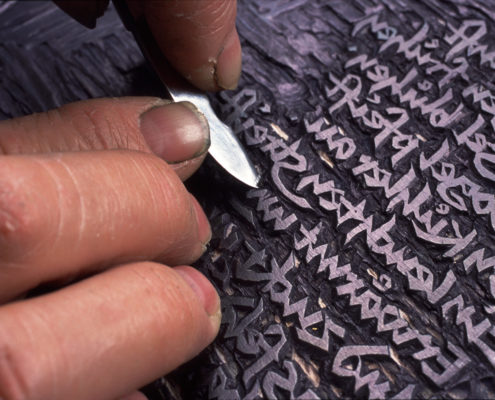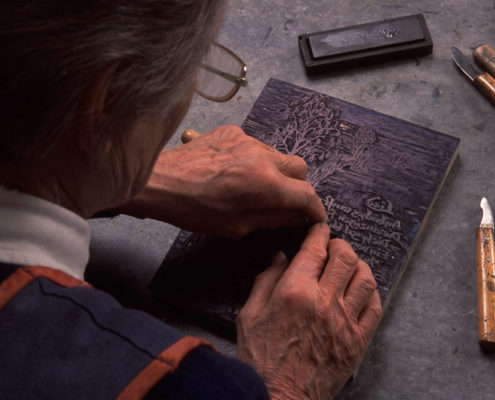Cutting the Block
Ilse employs only one knife to cut the image on the block. She uses a gouge to remove excess wood around the image. The type of wood used depends upon the detail in the cut. The larger prints are done on pine planks; more delicate work on cherry or poplar; and text or small flowers on maple. For very detailed work, Ilse sometimes uses end-grain maple, normally used for wood engravings. The work is still considered a woodcut, since Ilse cuts the image with a knife, rather than a burin.
She frequently draws the image directly on the block, keeping in mind that everything will be reversed in the print itself. To be able to visualize the finished print while cutting the block is paramount to achieving the desired result. Technically, cutting text is the most demanding process. First, Ilse writes the text on tracing paper. Then, she reverses the paper and pastes it on the wood block. The block is now ready to cut.
Ilse painstakingly cuts around the shape of each letter and punctuation mark until only the raised area of the text remains. This is the area that will print when the block is inked. Since printing always produces the mirror image of what appears on the block, each letter and word is cut in reverse.
To assess the text’s legibility, Ilse prints an initial proof. She can then make changes, as needed. Such alterations require her to read the black-on-black text on the block, in reverse.



